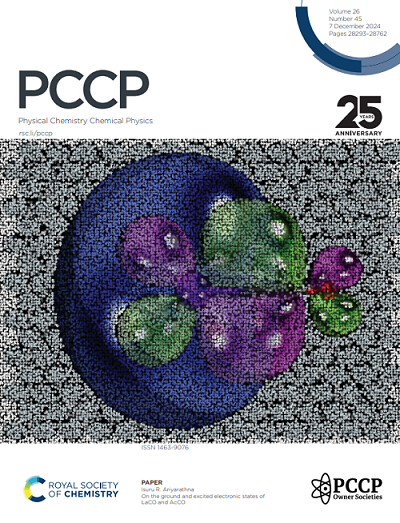A concise, efficient and accurate method for calculating the solid-liquid interfacial free energy
IF 2.9
3区 化学
Q3 CHEMISTRY, PHYSICAL
引用次数: 0
Abstract
The solid-liquid (SL) interfacial free energy (IFE) is a pivotal property in many scenarios in physics, chemistry and even materials science. However, current experimental measurements and theoretical calculations of the SL IFE still suffer from problems of conciseness, efficiency and, above all, accuracy. For example, the currently dominant theoretical ‘3C’ methods, i.e. the cleaving potential method (CPM), the capillary fluctuations method (CFM) and the critical nucleus method (CNM), give results for the same SL interface that differ with each other by tens of per cent. In addition, these ‘3C’ methods are all computationally intensive. In this communication, we propose a new stable interface method (SIM) for the calculation of the SL IFE, which is concise, efficient and accurate at the same time. Based on the lever law in the isoenthalpic-isobaric phase diagram and the minimum interface principle, we can artificially control the morphology of the stable SL interface with different mean curvature in molecular dynamics simulations. The excellent agreement of the application results with the Gibbs-Thomson equation illustrates the accuracy of SIM, and hence the calculated SL IFE. The computational framework of SIM demonstrates the conciseness and the ultra-high computational efficiency. By applying SIM to three representative metals, it is demonstrated that SIM is superior to current ‘3C’ methods in terms of conciseness, efficiency and, in particular, accuracy. Finally, due to the universality of the mechanisms, this method should also be applicable to various materials, such as non-metals.求助全文
约1分钟内获得全文
求助全文
来源期刊

Physical Chemistry Chemical Physics
化学-物理:原子、分子和化学物理
CiteScore
5.50
自引率
9.10%
发文量
2675
审稿时长
2.0 months
期刊介绍:
Physical Chemistry Chemical Physics (PCCP) is an international journal co-owned by 19 physical chemistry and physics societies from around the world. This journal publishes original, cutting-edge research in physical chemistry, chemical physics and biophysical chemistry. To be suitable for publication in PCCP, articles must include significant innovation and/or insight into physical chemistry; this is the most important criterion that reviewers and Editors will judge against when evaluating submissions.
The journal has a broad scope and welcomes contributions spanning experiment, theory, computation and data science. Topical coverage includes spectroscopy, dynamics, kinetics, statistical mechanics, thermodynamics, electrochemistry, catalysis, surface science, quantum mechanics, quantum computing and machine learning. Interdisciplinary research areas such as polymers and soft matter, materials, nanoscience, energy, surfaces/interfaces, and biophysical chemistry are welcomed if they demonstrate significant innovation and/or insight into physical chemistry. Joined experimental/theoretical studies are particularly appreciated when complementary and based on up-to-date approaches.
 求助内容:
求助内容: 应助结果提醒方式:
应助结果提醒方式:


